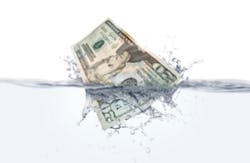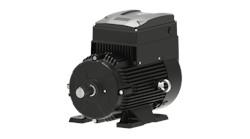Editor’s note: This is Part two of Water Technology’s November feature titled, “Energy management in water facilities.” In Part one, the author discussed several critical elements of energy management and finding energy saving opportunities. If you missed Part one, please visit WaterTechOnline.com to read the entire article.
Tracking progress and following-up
Once actions have been taken to save energy, it is important to find out how effective those steps have been. Energy savings that come from operational and behavioral changes (e.g. getting the system to switch off unnecessary items) need ongoing attention to ensure they remain effective and achieve their maximum potential. If a water system has invested money into new equipment, such as more efficient electric motors, variable-speed drives, etc., it needs to prove that it’s achieving the energy savings as predicted.
At the very least, it is necessary to keep analyzing energy data regularly to check that things are going as planned and are not getting any worse. Unwatched water facilities or machineries can habitually become less efficient with time. It is to be expected that equipment or machines will break down or lose efficiency and that operators will forget the good habits they worked hard to encourage in the past. Therefore, a quick look should be taken at the energy data every two or three days, or even just once a week, to ensure that nothing has gone wrong. Easy-to-fix faults, such as misconfigured control systems, can go unnoticed for months on end, leaving huge energy costs that could have easily been avoided.
Energy management in water pumps
Random tests of water pumps in many water systems and facilities have indicated about half were not performing efficiently, either because the wrong pump had been chosen for the job or because the pump was worn or degraded. If a water pump is not doing its job, this can increase energy consumption and pumping costs as well as reduce productivity and reliability. It is necessary to monitor energy usage regularly and repair and maintain water pumps to operate efficiently. The aim of careful water pump selection and regular maintenance is to have the pump performing as proficiently as possible; this gives the lowest energy consumption and lowest running costs while performing an assigned job.
In simple terms, pump efficiency measures how well the pump converts electrical power to useful work moving the water — “pump efficiency = power output/power input.” At the bidding stage, when the pump duty is calculated and pump proposals are assessed, the required operating points can be compared to those noted in the manufacturer’s proposal, particularly the pump’s performance curves. By seeing the efficiency the pump was designed to operate at, it is theoretically possible to select the best and most effective water pump for each pumping system, considering all possible operating conditions.
In the water industry, much of the work involves two machines: Namely the centrifugal water pump and the AC induction motor. The centrifugal pump converts mechanical energy into hydraulic energy (flow, velocity and pressure), and the AC electric motor converts electrical energy into mechanical energy.
As a rough indication, many medium and larger centrifugal water pumps offer efficiencies of 75 to 93 percent and even the smaller ones usually fall into the 60 to 77 percent range. Large AC electric motors, on the other hand, approach an efficiency of 97 percent (or sometimes more), and practically any electric motor (say 10 kW and above) can be designed to break the 90 percent barrier. As an approximate benchmark, an acceptable efficiency for a single impeller centrifugal water pump, for example, is above 60 percent. Either the wrong pump was chosen for the job or the pump is worn and needs repair, if lower than 60 percent efficiency is measured or achieved for a water pump.
The overall effectiveness of a centrifugal pump can be considered the product of three individual efficiencies: Mechanical, volumetric and hydraulic. Mechanical efficiency mainly includes losses in the bearing frame and seal systems. Volumetric efficiency could be determined by dividing the actual volumetric flow delivered by a pump at a given pressure by its theoretical volumetric flow. This efficiency includes losses due to leakage through the wear rings, balancing holes and vane clearances in the case of semi-open impellers. Hydraulic efficiency includes liquid friction and other losses in the volute and impeller. Although mechanical and volumetric losses are important components, hydraulic efficiency is the largest factor.
A centrifugal water pump has a lot in common with the induction motor when it comes to the design phase, selection exercises or degradation studies. As an indication, both electric motor and centrifugal pumps have only two major components that can be modified (whether at design stage or any maintenance/improvement scenarios) for a major effect on efficiency. In the case of an electric motor, it is the rotor and the stator. For the centrifugal water pump, it is the impeller and volute (or diffuser).
The affinity laws can be used to investigate inner workings of a water pump impeller; for any given impeller, the head it produces usually varies as the square of a change in speed; double the speed and the head increases by a factor of four. If the speed is kept constant, the same rule more or less holds true for small changes in its diameter. The head produced by an impeller is usually dependent upon its peripheral velocity, but water flow is influenced by several other factors. The width and depth (cross sectional area) of the flow passages (vanes) and the diameter of the impeller eye are important considerations, as they determine the ease with which some volume of water can pass through the impeller. Other factors, such as the vane shape, also influence an impeller’s performance.
Amin Almasi is a rotating machine consultant in Australia. He is a chartered professional engineer of Engineers Australia (MIEAust CPEng – Mechanical) and IMechE (CEng MIMechE) in addition to a M.Sc. and B.Sc. in mechanical engineering and RPEQ (Registered Professional Engineer in Queensland). He specializes in rotating machines including compressors, gas turbines, steam turbines, engines, pumps, condition monitoring and reliability. Almasi is an active member of Engineers Australia, IMechE, ASME and SPE. He has authored more than 100 papers and articles dealing with rotating equipment, condition monitoring and reliability.


